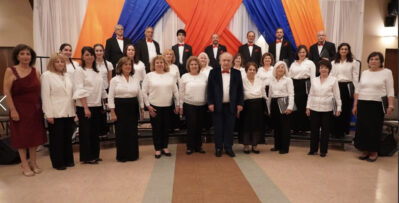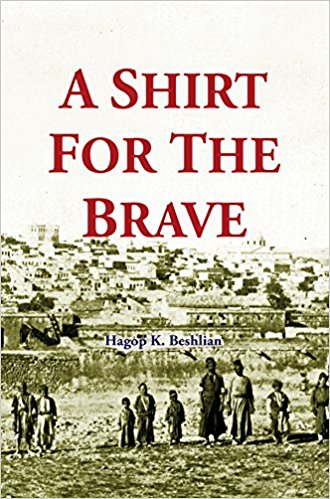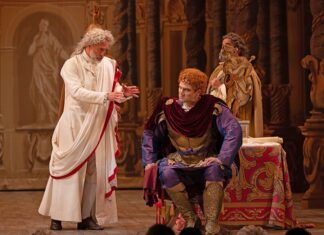By Gary A. Kulhanjian
In the Introduction of this trim but powerful 100-page memoir, A Shirt for the Brave by Dr. Hagop K. Beshlian, I acknowledged my gratitude to Dr. William V. Beshlian one of the author’s sons, for allowing me to read and use the manuscript while doing my preliminary research about Armenian immigrants who came to the United States in the first half of the twentieth century. In addition, I extended my appreciation to Bob Beshlian one of Dr. Beshlian’s grandsons, for allowing me to write the Introduction, and the editor, Ara Sarafian of the Gomidas Institute, for its publication in 2017.
Dr. Beshlian wrote his memoir after his retirement as a physician in New Jersey, circa 1957. The text was based on his memory, and not the historical dimensions of all the events between the 1890s until his subsequent immigration to the United States. He described it in his own words as “a story of terror and bloodshed, of heartaches and setbacks, of strange and fear-ridden experiences.” His memoir was intended to inform his children and family of his story for their knowledge and remembrance. He referred to his abiding fate as “Good Providence,” which was the power of his survival.
The scope of the memoir was divided into twenty-two short, unnamed chapters. Beshlian included early photos of himself, his immediate family, and a hand-drawn map of the Ottoman Empire including areas of ancient Armenia occupied by the Armenians. The new publication does not include the original photographs due to their poor quality for reproduction. Bob Beshlian provided photos of his grandfather and members of the Beshian family. The new publication included a timeline with some of the key events during Dr. Hagop Beshlian’s lifetime in Turkey from his birth until his escape in 1922.
The writer gave a vivid description of the milieu in Turkey from his youth to his adulthood. He described the hostilities endured by the Armenian populous and mentions those who assisted him in very difficult situations. He referred to the crimes of the Sultan Abdul Hamid prior to the advent of the Young Turk revolution and their focus on removing the Armenians. During the Hamidian atrocities against the Armenians and the development of the Medz Yeghern (Catastrophe/Armenian Genocide), Beshlian focused on the place of his birth, the city of Urfa, where he was the first Armenian physician. Its name was changed to Sanliurfa in the second half of the twentieth century; however, it was known in the ancient world as Edessa. In the ancient world Edessa was where St. Thaddeus cured the Armenian King Abkar and his family converted to Christianity before the Armenians adopted the religion in 301 C.E. as the first Christian nation.
Urfa was where Hagop grew up as a boy and returned from medical college as a physician. He was orphaned together with other Armenian children and educated by an American missionary. Her name was Corinna Shattuck. He wrote about how she assisted hundreds of Armenian orphans after the Hamidian massacres. Historians have not highlighted the humanitarian efforts of this heroine. She had witnessed the “cathedral holocaust” where Hagop’s mother perished during the era of Hamid. The huge Armenian cathedral was named after the Holy Mother of God.








